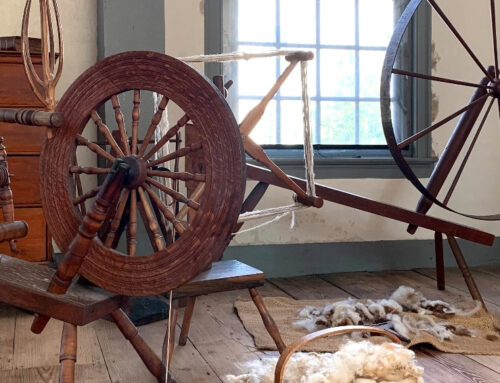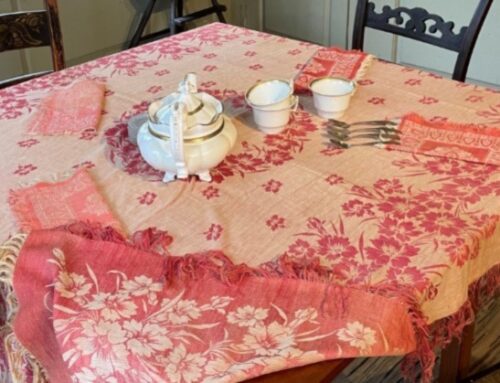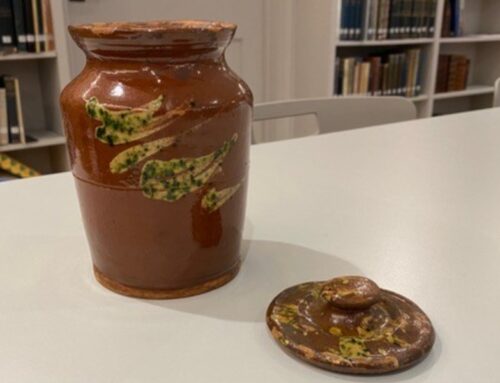The portable tin reflector oven appeared in America around the second half of the 1700s. Old probate inventories referred to it as a “tin kitchen” or “tin oven.” Made in a demi-barrel shape with three sides, with the fourth side left open to face the fire, the oven came in different sizes to roast meat, such as a chicken, a goose, a slab of beef, or a large turkey. Quick breads made without yeast, such as cornbread, could also be baked in these kinds of ovens – which had a tray to hold the bread pan instead of a spit to hold a piece of meat. Food would also be reheated in these ovens.
The convenience the tin reflector oven afforded the 18th-early 19th-century cook might be compared to today’s microwave oven. Many today use a tin reflector oven on the hearth to achieve that same delicious, slow-cooked roasted flavor of meat. On display in the Isaac Stevens House kitchen there stands a tin reflector oven large enough to roast a turkey.





